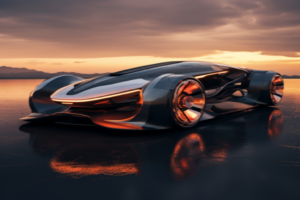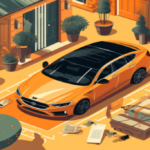Introduction:
The automotive industry has always been at the forefront of innovation, constantly pushing the boundaries of design and technology. Over the years, we have witnessed significant advancements in automobiles, from the introduction of electric and hybrid vehicles to the integration of autonomous driving features. As we look ahead, the future of automobile design and technology promises to be even more revolutionary. This article aims to explore the exciting possibilities and trends that will shape the automotive industry in the coming years.
1. Electric Revolution:
One of the most significant transformations in the automotive industry is the rise of electric vehicles (EVs). With concerns about climate change and the push for sustainability, automakers are investing heavily in EV technology. The future will see a wider adoption of EVs, with improved battery technology, longer ranges, and faster charging infrastructure. Moreover, advancements in materials and manufacturing techniques will lead to lighter and more energy-efficient EVs.
2. Autonomous Driving:
Autonomous driving technology is rapidly evolving, and self-driving cars are no longer a distant dream. The future of automobiles will witness increased automation, enabling vehicles to navigate and operate without human intervention. Advancements in sensors, artificial intelligence, and machine learning algorithms will enhance the safety and reliability of autonomous vehicles. The integration of vehicle-to-vehicle (V2V) and vehicle-to-infrastructure (V2I) communication systems will further optimize traffic flow and reduce accidents.
3. Connected Cars:
The future of automobile design lies in connectivity. Cars will become more connected than ever before, thanks to the Internet of Things (IoT) and 5G technology. Connected cars will offer a seamless and personalized driving experience, with features such as real-time traffic updates, predictive maintenance, and enhanced entertainment options. Moreover, cars will integrate with smart homes and smart cities, allowing for intelligent routing and efficient energy management.
4. Augmented Reality:
Augmented reality (AR) will revolutionize the way we interact with automobiles. With AR technology, drivers will have access to heads-up displays, providing vital information without distracting them from the road. AR will also enhance the design process, enabling designers to visualize and manipulate virtual car models in real-world environments. Furthermore, AR will enhance safety by overlaying navigation cues and warnings directly onto the driver’s field of view.
5. Sustainable Materials and Manufacturing:
The future of automobile design will prioritize sustainability in materials and manufacturing. Automakers will increasingly turn to eco-friendly materials, such as recycled plastics, natural fibers, and bio-based composites. Additionally, advancements in 3D printing and additive manufacturing will enable more efficient and sustainable production processes. The shift towards sustainable materials and manufacturing techniques will reduce the environmental footprint of automobiles.
Conclusion:
The future of automobile design and technology holds immense promise. Electric vehicles will dominate the roads, offering zero-emission transportation, while autonomous driving will revolutionize mobility and improve safety. Connected cars will provide a seamless and personalized driving experience, integrating with smart infrastructure. Augmented reality will enhance both the driving experience and the design process. Moreover, the industry’s focus on sustainability will drive the adoption of eco-friendly materials and manufacturing techniques. As we embark on this exciting journey, collaboration between automakers, tech companies, and regulatory bodies will be crucial to realize the full potential of future automobile design and technology.
In summary, the future of automobiles will be characterized by electric revolution, autonomous driving, connected cars, augmented reality, and sustainable materials and manufacturing. These advancements will shape a new era of transportation, offering enhanced safety, efficiency, and sustainability. The automotive industry is poised for remarkable transformations, and the future is undoubtedly exciting.







